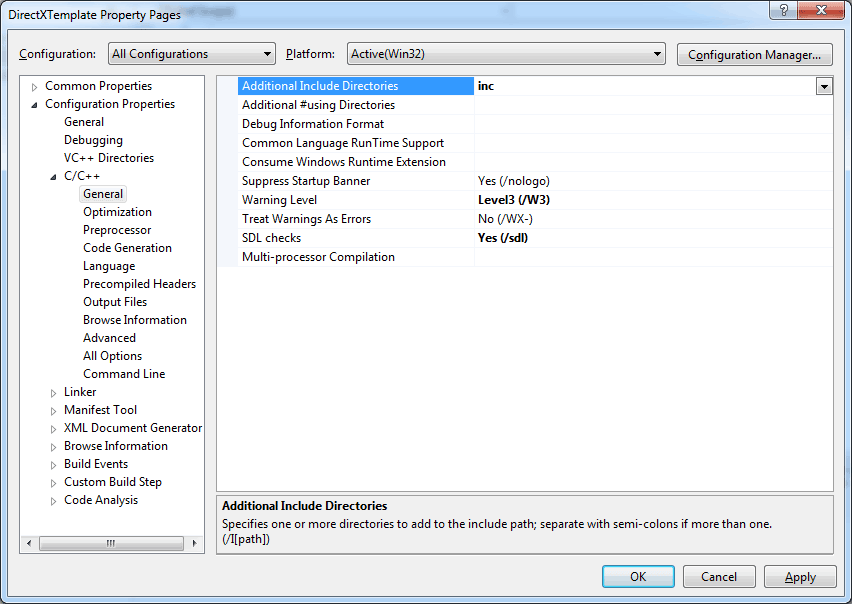

- #GAMMA CONTROL DIRECTX 11 CODE DRIVER#
- #GAMMA CONTROL DIRECTX 11 CODE FULL#
- #GAMMA CONTROL DIRECTX 11 CODE SOFTWARE#
- #GAMMA CONTROL DIRECTX 11 CODE WINDOWS#
Line-list, triangle-list, triangle-strip, 8 control-point patch-list. The sequence of vertex data represent a sequence of primitives. Various primitive topologies are available to make Of fixed-function state and various Draw*() API/DDI calls. The layout of data acrossĪll the Buffers is specified by an Input Declaration, in which each entry defines an "Element" with: an input slot,Ī structure offset, a data type, and a target register (for the first active Shader in the Pipeline).Ī given sequence of vertices is constructed out of data fetched from Buffers, in a traversal directed by a combination The Buffers are each bound to an individual input slot and given a structure stride. Vertex data can come from multiple Buffers, accessed in an "Array-of-Structures" fashion from each Buffer. Graphics Pipeline, by pulling source geometry data out of 1D Buffers (5.3.4). The Input Assembler (IA) introduces triangles, lines, points or Control Points (for Patches) into the

A table of links to all of the Chapter delta summaries
#GAMMA CONTROL DIRECTX 11 CODE FULL#
This document is the product of starting with the full D3D11.2 functional spec and adding in relevant WindowsNext D3D11.3 features.Įach Chapter in this spec begins with a summary of the changes fromĭ3D10 to D3D10.1 to D3D11 to D3D11.1 to D3D11.2 to D3D11.3 for that Chapter. 1.5 Not Optimized for Smooth Readingīeware, there is little flow to the content in this spec, although there are plenty of links from place to place. There are exceptions, but do not expect to gain much more than an understanding of the "facts" about D3D11.3 from this spec.

#GAMMA CONTROL DIRECTX 11 CODE SOFTWARE#
Is any attempt to characterize what sorts of things applications software developers might do using the functionality providedīy D3D11.3. Little to no theory or derivation of graphics concepts, techniques or history is provided. High-level GPU programming concepts (such as high level shading languages) are not covered. GPU resource management, GPU process scheduling, and low-level Operating System driver/kernel architecture are not covered. The exact relationship and interactions between topics covered in the Graphics Pipeline with other Operating System Note that on each revision of this spec, allĬhanges made for that revision are summarized in a separate document typically distributed with the spec. These shaded boxes DO NOT provideĪ complete listing of all such trivia, however. Topic being described, or to flag an unresolved issues. Justification for decisions, explain history about a feature, provide clarifications or general remarks about a Occasionally, boxed text such as this appears in the spec to indicate
#GAMMA CONTROL DIRECTX 11 CODE DRIVER#
Included will be some references to how the Graphics Pipeline isĬontrolled through a Device Driver Interface (DDI), and occasionally depictions of API usage as needed to illustrate points. Targeted by the D3D11.1 Graphics Pipeline, in a form that attempts to be agnostic to any Topics covered in this spec center on definition of the hardware architecture being In addition, software developers who are vested in the details about medium-term GPU hardwareĭirection will find interesting information. Hardware or software components that would be considered part of a D3D11.3-compliant system. The target audience for this spec are the implementers, testers and documenters of
#GAMMA CONTROL DIRECTX 11 CODE WINDOWS#
Unit (GPU) design issues and the general architecture of Microsoft Windows Operating Systems, as well It is assumed that the reader is familiar with real-time graphics, modern Graphics Processing This document describes hardware requirements for Direct3D 11. Condensed Table of Contentsġ.6 How D3D11.3 Fits into this Unified Spec 3 Functionalįull Table of Contents at end of document. Direct3D 11.3 Functional Specification Direct3D 11.


 0 kommentar(er)
0 kommentar(er)
